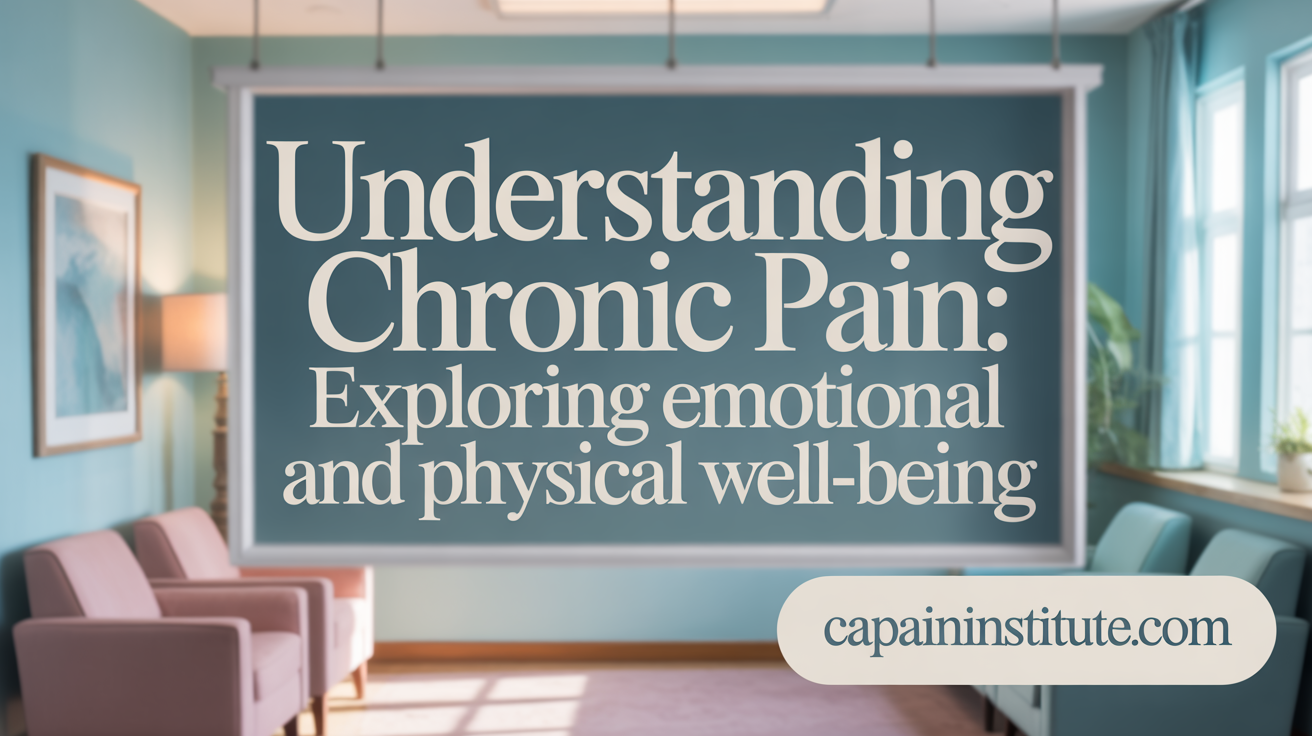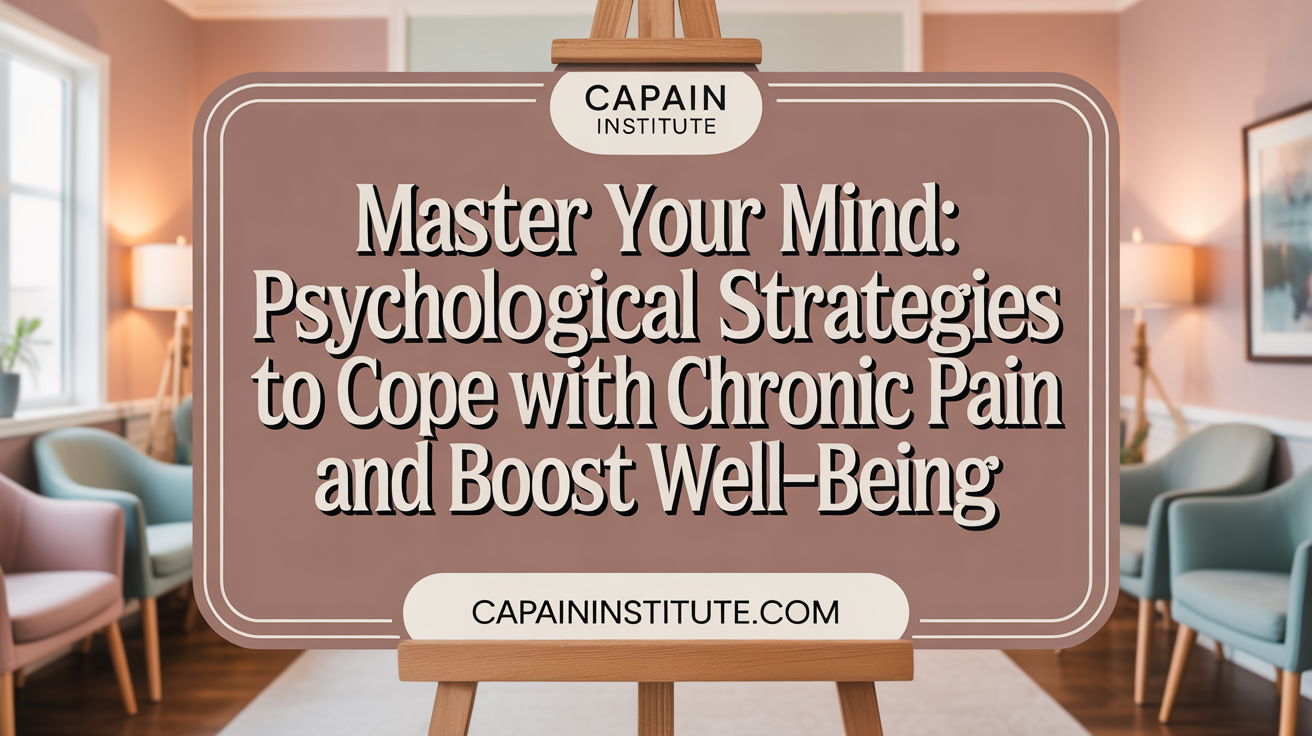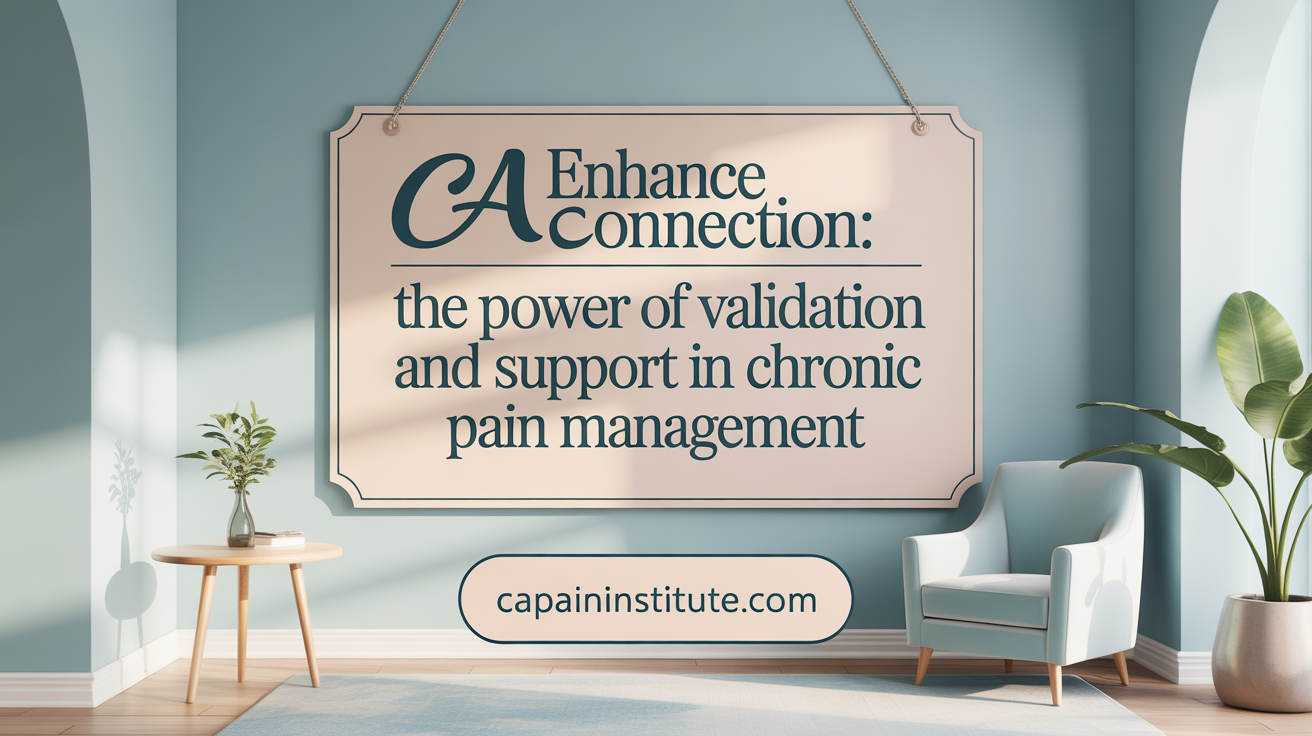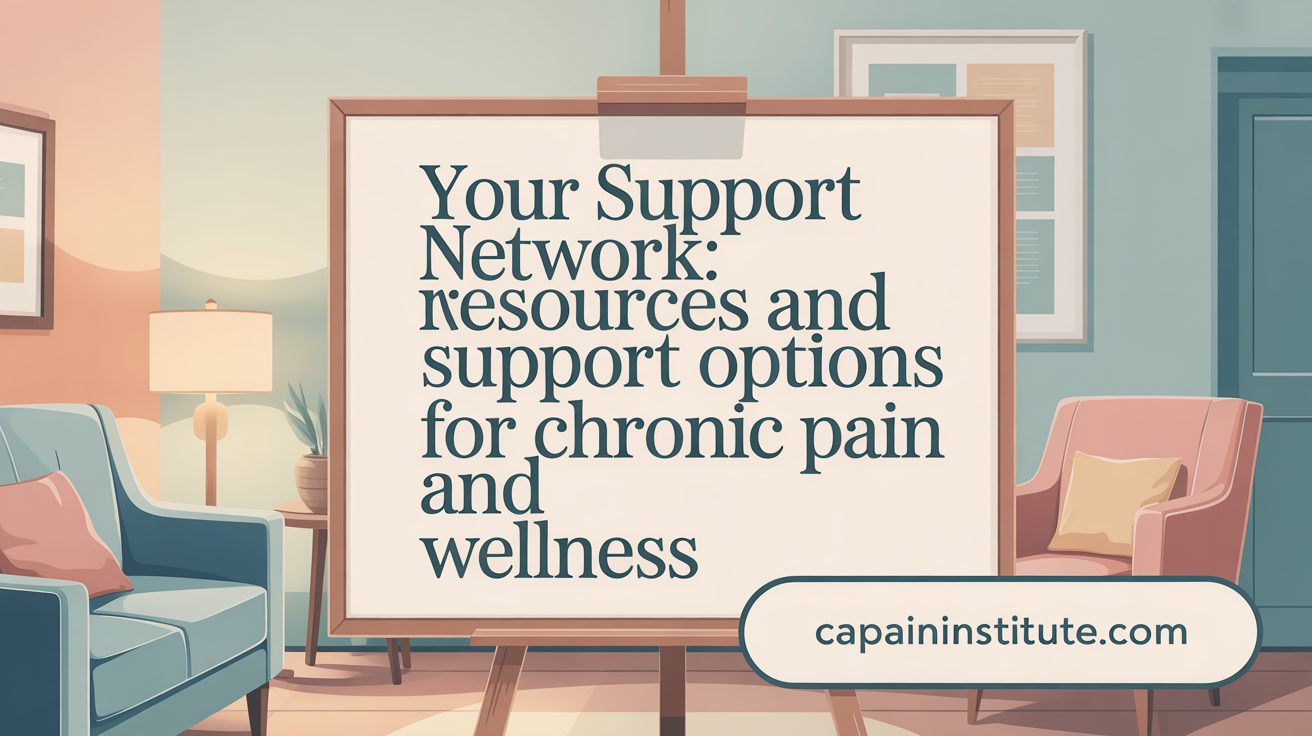Understanding Chronic Pain: More Than Just Physical Discomfort
Chronic pain affects millions worldwide, extending beyond mere physical sensations to influence emotional well-being, daily functioning, and quality of life. Defined as persistent pain lasting longer than three months or beyond normal healing, it poses a complex challenge requiring a holistic approach. This article explores comprehensive coping strategies, encompassing physical, psychological, and lifestyle techniques, designed to empower individuals living with chronic pain to manage their condition effectively and improve their overall quality of life.
The Multifaceted Nature of Chronic Pain and Its Psychological Impact

What is the definition and duration of chronic pain?
Chronic pain is persistent pain that lasts longer than three months, often extending beyond the normal healing process. It can result from various conditions such as arthritis, injuries, or health issues involving complex interactions within the nervous system. Unlike acute pain, which signals injury or illness, chronic pain may continue even after the initial cause has healed, affecting many aspects of daily life.
What are the psychological effects such as depression and anxiety?
Living with long-term pain can lead to psychological challenges including depression, anxiety, sleep disturbances, and mood fluctuations. The ongoing discomfort and limitations can cause feelings of frustration, hopelessness, and social withdrawal. These emotional responses, if unmanaged, can further intensify the perception of pain and diminish quality of life.
Why is it important to address mental health?
Addressing mental health is crucial because emotional well-being significantly influences how pain is perceived and managed. Psychological distress can create a vicious cycle, where stress and tension heighten pain levels, and pain worsening feeds emotional distress. Therefore, integrating psychological care into pain management helps improve overall outcomes.
What role do psychologists and mental health professionals play?
Psychologists and mental health experts provide essential support through therapies such as cognitive-behavioral therapy (CBT), mindfulness, and relaxation techniques. They help patients develop coping strategies, challenge negative thoughts, and accept their condition, which can reduce emotional suffering and improve functional abilities.
How do cognitive distortions influence pain?
Negative thought patterns, like catastrophizing—believing pain will worsen or never improve—can amplify pain perception and emotional distress. These cognitive distortions foster feelings of helplessness and prevent effective coping. Addressing and restructuring these thoughts through psychological therapies can help patients view their pain management more positively.
What is the significance of acceptance and the grieving process?
Acceptance involves recognizing and coming to terms with the reality of living with chronic pain. It often requires a grieving process, where individuals mourn the loss of their previous active lifestyle. This acceptance facilitates better adaptation and reduces emotional resistance, allowing for more effective coping strategies.
How does emotional regulation and cognitive restructuring help?
Learning to regulate emotions through techniques like deep breathing, meditation, and mindfulness reduces tension and stress that can worsen pain. Cognitive restructuring involves changing unhelpful beliefs about pain—such as
Non-Medication Strategies for Managing Chronic Pain

How can you manage chronic pain without medication?
Managing chronic pain without relying on medication involves a multifaceted approach that targets the physical, mental, and lifestyle aspects of pain. Physical therapies are a cornerstone, incorporating exercises and manual techniques like massage and physiotherapy. These interventions can improve flexibility, strength, and mobility, reducing the physical burden of pain.
Psychological techniques also play a vital role. Education about pain, alongside relaxation exercises, mindfulness, meditation, and hypnosis, can help lower muscle tension and reduce stress, which often exacerbate pain symptoms. Cultivating a calm mind through these practices can lead to noticeable improvements in pain perception.
Distraction methods can help divert attention from ongoing discomfort. Engaging in hobbies such as listening to music, knitting, or gardening, as well as participating in support groups, can boost mood and provide emotional relief.
Complementary therapies are frequently recommended. Acupuncture, acupressure, and massage are known for their pain-relieving properties and are often used as adjuncts to other treatments. Neurostimulation techniques like Transcutaneous Electrical Nerve Stimulation (TENS) send mild electrical impulses through the skin to block pain signals, offering an additional non-invasive option.
Lifestyle changes are equally important. Regular gentle exercise preserves muscle function and releases endorphins—natural mood enhancers and pain blockers. Maintaining good sleep hygiene by establishing a calming bedtime routine can reduce sleep disturbances often linked to chronic pain. Additionally, a balanced diet rich in anti-inflammatory foods, proper hydration, and avoiding substances like alcohol and tobacco contribute positively.
Overall, adopting these strategies fosters a holistic sense of control and often leads to improved quality of life without the need for medications.
Psychological Techniques and Coping Skills for Chronic Pain

What psychological techniques can help manage chronic pain?
Managing chronic pain involves more than just physical treatments; psychological strategies play a crucial role. Cognitive-behavioral therapy (CBT) is widely used to help individuals identify and change negative thought patterns that can worsen pain perception. It encourages adaptive behaviors, such as staying active and engaging in daily routines despite discomfort.
Mindfulness and meditation practices are effective in reducing emotional distress associated with pain. These techniques promote acceptance of pain and increasing awareness of the present moment, decreasing rumination and anxiety. Acceptance and Commitment Therapy (ACT) complements these approaches by emphasizing learning to accept ongoing pain while committing to actions aligned with personal values.
Relaxation training, including deep breathing, progressive muscle relaxation, and imagery, helps to calm tense muscles and lower stress levels. Practicing positive self-talk can also boost emotional resilience, helping individuals challenge unhelpful beliefs about pain and foster a more hopeful outlook.
Beyond individual techniques, staying socially connected and engaging in enjoyable activities are vital for emotional well-being. Support groups and talking with others who understand chronic pain can reduce feelings of isolation, provide encouragement, and share practical strategies.
Seeking help from mental health professionals such as psychologists can tailor interventions specifically to each person’s needs, targeting both emotional and psychological challenges. These therapies can significantly improve quality of life by addressing the mental impact of living with persistent pain.
What are the five essential coping skills every chronic pain patient should develop?
For effective management, five fundamental coping skills are indispensable:
| Coping Skill | Description | Purpose |
|---|---|---|
| Understanding the pain | Learning about the condition, triggers, and types of pain | Fosters informed decision-making and tailored management strategies |
| Acceptance | Acknowledging limitations and embracing the reality of pain | Reduces resistance and emotional distress |
| Calming techniques | Practicing deep breathing, relaxation, and imagery | Lowers stress, decreases muscle tension, and diminishes pain perception |
| Balancing activities and rest | Using pacing to avoid flare-ups and maintain function | Prevents overexertion and promotes manageable activity levels |
| Effective coping strategies | Developing personalized methods such as hobbies, socializing | Enhances resilience and builds emotional support systems |
Developing these skills helps individuals navigate daily challenges and promotes a more adaptive response to chronic pain.
Self-Management, Lifestyle Adjustments, and Flare-Up Prevention
What self-management tips and lifestyle adjustments can help relieve chronic pain?
Effective management of chronic pain involves several practical strategies that individuals can incorporate into their daily routines. Pacing activities by breaking tasks into smaller, manageable steps and planning regular breaks helps prevent flare-ups caused by overexertion. Maintaining proper hydration and eating a nutritious, balanced diet supports overall healing and reduces inflammation. Avoiding substances like alcohol and tobacco can also improve pain outcomes.
Engaging in gentle, regular exercise such as walking, swimming, or yoga enhances flexibility, strength, and mood, which are crucial for long-term relief. Incorporating relaxation techniques like deep breathing, progressive muscle relaxation, and mindfulness can reduce stress and muscle tension, contributing to better pain control.
Sleep hygiene is vital — establishing a consistent routine, creating a calming environment, and avoiding stimulants before bedtime can significantly improve sleep quality. Additionally, participating in enjoyable activities, social events, and educational programs empowers individuals, helping them feel more in control of their pain and emotional health.
How can chronic pain flare-ups be handled and prevented?
Managing and preventing flare-ups requires a proactive approach that includes understanding personal triggers such as stress, weather shifts, or physical overexertion. Developing a tailored plan that emphasizes pacing activities and listening to your body can prevent sudden increases in pain.
During a flare-up, applying gentle movement, utilizing distraction techniques like hobbies or conversations, and adhering to prescribed medications are important steps in alleviating symptoms. Relaxation and mindfulness practices, including deep breathing exercises, can further reduce tension. Building a support network of healthcare professionals, family, and friends provides emotional and practical assistance when needed.
Regularly reviewing and adjusting your pain management plan, incorporating lifestyle modifications, and exploring alternative therapies such as massage or biofeedback can help maintain better control over chronic pain in the long run. Overall, awareness and preparedness are essential in reducing the frequency and intensity of painful episodes.
Social Support and Building Effective Communication for Chronic Pain

Why is emotional validation important for someone living with chronic pain?
Providing emotional validation means trusting and believing in the person’s pain experience, even if it isn't visible. Validating their feelings can reduce feelings of isolation and frustration, which are common in chronic pain. When loved ones acknowledge the complexity and persistence of pain, it fosters trust and encourages open communication.
How can you support independence in daily tasks?
Supporting independence involves encouraging the individual to find new ways to manage daily responsibilities. This could include adapting tasks to their current abilities, pacing activities, and avoiding overexertion which could trigger flare-ups. Helping them set realistic goals promotes confidence and control over their condition.
Why is maintaining social connections crucial?
Chronic pain often leads to social isolation, impacting mental health. Regular social interactions, whether through visits, calls, or support groups, allow the person to share experiences, gain emotional support, and feel connected. Maintaining social ties is vital for resilience and overall well-being.
What tools can improve communication about pain?
Tools like the Pain Number System, where individuals rate their pain on a scale, and the Spoon Theory, which explains the limited energy reserve, help communicate pain levels effectively. These strategies enable better understanding and tailored support from family and friends.
When should someone seek psychological therapy?
Referrals to therapies such as Cognitive Behavioral Therapy for chronic pain (CBT-CP) or Acceptance and Commitment Therapy (ACT) can assist in managing emotional challenges. These therapies help reframe negative thoughts, develop coping strategies, and reduce anxiety or depression related to long-term pain.
How does building a support network improve management?
A strong network comprising family, friends, healthcare providers, and mental health professionals offers emotional reassurance and practical help. It creates a safety net that encourages positive coping behaviors and enhances adherence to pain management routines.
| Aspect | Description | Benefits |
|---|---|---|
| Emotional Validation | Believing and acknowledging pain experiences | Reduces isolation, builds trust |
| Supporting Independence | Encouraging task adaptation | Promotes confidence |
| Social Connections | Maintaining relationships | Boosts emotional health |
| Communication Tools | Using Pain Number System, Spoon Theory | Enhances understanding |
| Psychological Therapies | CBT-CP, ACT | Improves coping and mental health |
| Support Network | Family, friends, professionals | Provides holistic aid |
Understanding how to communicate effectively and foster a supportive environment allows individuals with chronic pain to feel validated, empowered, and less isolated, significantly improving their overall quality of life.
Resources, Professional Support, and Holistic Approaches for Chronic Pain

What resources and support options are available for individuals living with chronic pain?
Individuals facing chronic pain have a variety of resources and support systems to help them manage their condition. Organizations like the U.S. Pain Foundation offer educational materials, online series, and information about different treatment options, including conventional medication, complementary therapies, and medical cannabis. Support is also available through groups such as the American Chronic Pain Association (ACPA), which provides peer support, educational resources, and condition-specific guidance.
Mental health services play a vital role, with counseling, meditation guides, and support groups designed to help cope with the emotional toll of chronic pain. Practical assistance, including transportation aid, financial support, and legal advice, can remove barriers to care. Patients are encouraged to explore physical therapy, self-management programs, and to build strong social support networks that foster resilience and understanding.
How does stress management relate to chronic pain?
Stress and chronic pain are interconnected, sharing common brain pathways involving the limbic system, which includes the hippocampus, amygdala, and prefrontal cortex. Poor stress regulation can lead to heightened pain sensitivity and emotional challenges. Using relaxation techniques, mindfulness meditation, regular physical activity, and psychological therapy can help reduce stress levels.
Effective stress control can lessen hyperalgesia, the increased sensitivity to pain, and positively influence physiological systems such as the hypothalamic-pituitary-adrenal (HPA) axis, which regulates cortisol levels, and the autonomic nervous system. Managing stress is therefore a crucial part of a comprehensive approach to pain treatment and can significantly improve outcomes.
How can the quality of life be improved through pain coping strategies?
Adopting personalized coping strategies can greatly enhance quality of life. Techniques like mindfulness, relaxation exercises, cognitive-behavioral therapy, and lifestyle changes—such as maintaining a balanced diet, engaging in gentle exercise, and ensuring good sleep—help control pain perception and boost overall well-being.
Utilizing real-time assessments allows individuals to adapt their coping methods to specific situations, increasing effectiveness. Building supportive relationships and engaging in enjoyable activities foster emotional resilience, reduce feelings of isolation, and create a sense of normalcy. These approaches contribute to decreased depression, improved mood, and greater satisfaction in daily life, making pain more manageable and life more fulfilling.
Embracing a Holistic and Individualized Approach to Chronic Pain
Living with chronic pain demands a comprehensive, patient-centered approach that integrates physical therapies, psychological techniques, lifestyle modifications, and strong social support. By understanding the multifaceted nature of chronic pain and developing tailored coping strategies, individuals can effectively manage pain, reduce its impact on their daily lives, and enhance their quality of life. Empowerment through education, collaboration with healthcare professionals, and building supportive networks are vital to navigating this journey. While chronic pain may remain a persistent challenge, embracing holistic strategies opens the door to meaningful, fulfilling living despite it.
References
- Coping with chronic pain - American Psychological Association
- [PDF] Pain Self-Management Strategies - UC Davis Health
- What are the Most Effective Coping Strategies for Managing Chronic ...
- Coping with a flare up of chronic pain - NHS inform
- 11 Tips for Living With Chronic Pain - WebMD
- 10 ways to reduce pain - NHS
- Chronic pain and managing your mental health | NHS inform
- Living with Chronic Pain: Coping Strategies and Support Resources
- Understanding the chronic pain journey and coping strategies that ...
